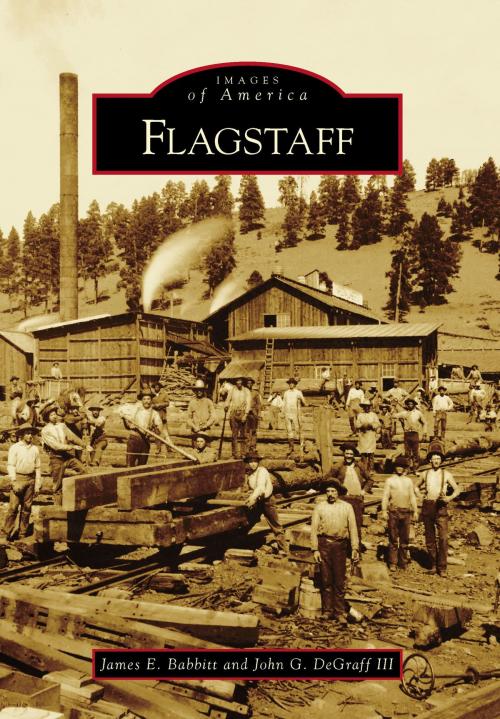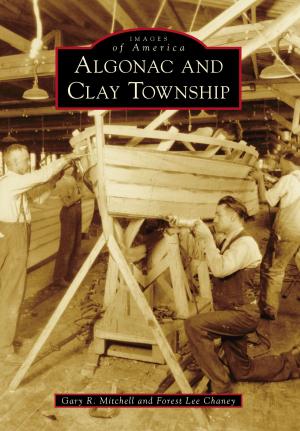| Author: | James E. Babbitt, John G. DeGraff III | ISBN: | 9781439649848 |
| Publisher: | Arcadia Publishing Inc. | Publication: | November 23, 2009 |
| Imprint: | Arcadia Publishing | Language: | English |
| Author: | James E. Babbitt, John G. DeGraff III |
| ISBN: | 9781439649848 |
| Publisher: | Arcadia Publishing Inc. |
| Publication: | November 23, 2009 |
| Imprint: | Arcadia Publishing |
| Language: | English |
On July 4, 1876, immigrants from Boston traveling to California were camped at Antelope Spring in a valley just south of the San Francisco Peaks. To celebrate the nation's centennial, the pioneers stripped the branches off a tall pine tree and ran up Old Glory. This event gave Flagstaff its name. Six years later, in 1882, the Atlantic and Pacific Railway reached Flagstaff, and a small settlement was born. Railroad construction crews used local ponderosa pine trees for rail ties, beginning a timber industry that thrived in the region for the next century. Flagstaff also became a center of tourism as visitors came to see spectacular natural sights in the surrounding territory, including the Grand Canyon, Oak Creek Canyon, and Sunset Crater, and to experience the Native American cultures of the American Southwest. This volume traces the establishment and early development of Flagstaff and depicts many facets of life in Arizona's "Mountain Town."
On July 4, 1876, immigrants from Boston traveling to California were camped at Antelope Spring in a valley just south of the San Francisco Peaks. To celebrate the nation's centennial, the pioneers stripped the branches off a tall pine tree and ran up Old Glory. This event gave Flagstaff its name. Six years later, in 1882, the Atlantic and Pacific Railway reached Flagstaff, and a small settlement was born. Railroad construction crews used local ponderosa pine trees for rail ties, beginning a timber industry that thrived in the region for the next century. Flagstaff also became a center of tourism as visitors came to see spectacular natural sights in the surrounding territory, including the Grand Canyon, Oak Creek Canyon, and Sunset Crater, and to experience the Native American cultures of the American Southwest. This volume traces the establishment and early development of Flagstaff and depicts many facets of life in Arizona's "Mountain Town."















